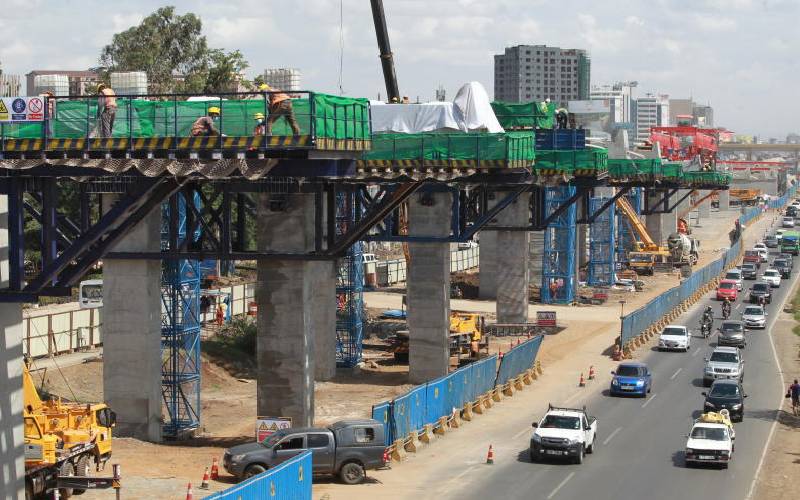On a year-on-year basis, the total number of construction projects in Africa in 2020 declined by 14.8%, while the total value of projects dropped by 19.8%., a new report has shown.
Deloitte’s 2020 edition of the Africa Construction Trends Report includes 385 projects with a total project value of US$399bn.
Once again, East Africa, with a 30.6% share, recorded the highest number of projects (118 projects), followed by Southern Africa, with 26.5% (102 projects) and West Africa,
with 19.7% (76 projects). In the East African region, Uganda, with 27 projects, and Kenya,
with 26 projects, recorded the highest number of projects in the region.
This keeps them among the top five countries in the continent in terms of number of projects. Egypt and South Africa both registered 40 projects, making them the countries with the highest number of projects on the continent. Egypt recorded a project value of US$93.7bn (23.5% of the continental value).
Meanwhile, Nigeria recorded the second largest project value of US$52.4bn, followed by South Africa, with a project value of US$50.4bn, and Tanzania with US$33.5bn. In 2020, almost three in four projects (73.2%) were in the low value range of US$50m-US$500m (compared to 64.8% in 2019).
An overall total of 46 projects were valued between US$501m and US$1bn. Seven projects were valued at above US$10bn. Of these, the top three include Egypt’s New Capital City worth US$58bn, Mozambique’s Offshore Area 1 Liquefied Natural Gas (LNG) project worth US$23bn, followed by Nigeria’s Centenary City worth US$18bn.
These three major projects account for a total value of US$99bn, or 24.9% of Africa’s combined project value. East Africa recorded the largest decline in number of projects and value of projects compared to 2019 figures.
The number of projects in East Africa dropped by 35%, while the total project value dropped by 47%, inter alia due to the completion of several large projects. The number of projects in Southern Africa increased by 35.3%, the largest increase in the continent.
African Governments, accounting for an ownership share of 75.8%, remain the largest construction project owners in the continent. Private Domestic firms own 10.4% of the projects, while Consortiums own 7.8%. In terms of funding activities, Governments were responsible for funding most of the projects, particularly projects in the Transport sector (roads and bridges).
Government registered a funding share of 27.5% (106 projects), followed by Consortiums, and China with funding shares of 15.1% (58 projects) and 13.5% (52 projects), respectively.
Private Domestic firms (include firms headquartered in the same African country where the project is being constructed) were responsible for funding 11.7% (45 projects) of the projects in the continent, while African Development Finance Institutions (DFIs) and International DFIs recorded a funding share of 9.6% (37 projects) and 8.8% (34
projects), respectively.
African Governments also contributed the largest value to funding projects. In value terms, Government accounted for 34.5% (US$137.7bn). Private Domestic firms contributed the second largest value (US$73.1bn or 18.3%), followed by China, which contributed US$59.2bn (14.8%) towards funding of projects.
In the past years, China has established a significant presence in building Africa’s infrastructure projects. In 2020, the country on its own was responsible for building 31.4% (121 projects). The continent’s Private Domestic firms built 28.8% (111 projects), while Consortiums recorded a building share of 15.1% (58 projects).
In 2020, the global economy was hit hard by the COVID-19 pandemic, resulting in both a humanitarian and an economic crisis. The pandemic led to economic lockdowns and worldwide closures of country borders, which were imposed to contain the
spread of the virus.
With an inverse relationship between containment policies and economic activity, global GDP growth is expected to have contracted by -3.5% in 2020 from expanding by 2.8% in 20192– a much larger contraction than seen during the 2008–09 global
financial crisis.
Despite this large drop in global GDP growth, a global rebound of 5.5% is forecast for 2021.3 This forecast will, however, be largely influenced by the intensity of the pandemic in the coming months, including subsequent waves of infections and the possible near-term rollout of a vaccine, as well as supply chain disruptions and volatile commodity prices.
In Sub-Saharan Africa (SSA), economic growth is expected to have dropped from 3.2% in 2019 to -2.6% in 2020 – the largest contraction for the region on record.Growth in SSA is projected to rebound in 2021 to 3.2%,5 assuming that the pandemic subsides.
The major drop in commodity prices, particularly oil, is expected to result in fiscal and external account imbalances in most oil-dependent African countries, translating into increased public debt-to-GDP ratios in the short term.
Public debt is expected to mount as countries seek additional resources to enhance their health system capacity and fight the socioeconomic effects of COVID-19, especially as many countries respond to the pandemic through some form of fiscal stimulus package. This could be cushioned for mineral exporting countries by an upswing in commodity prices in 2021.
Also Read
Total halts work on Mozambique gas project citing insecurity
Massey Children’s Hospital begins construction in Lagos

